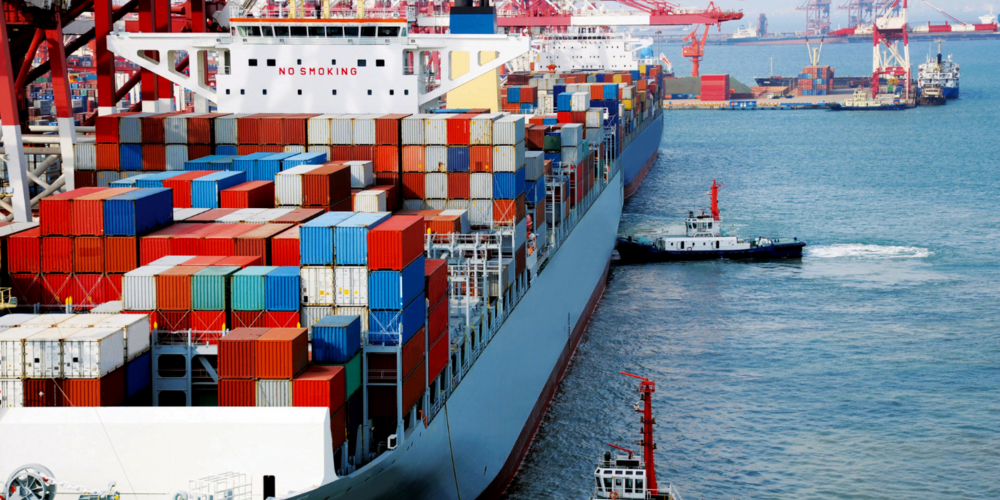Good information plays a critical role in effective operation and decision-making at all levels of business. For keeping your logistics up-to-date, we’ve compiled our latest updates on inland transportation and ocean freight in the Asia-Pacific market. Read on to get more useful information to move your business and effectively schedule your logistics.
With the increase in production capacity and market demand recovery, peak time is around the corner. We suggest you plan ahead for your inland transportation by referring to historical data, market trends, business productivities, logistic partners' operation capability, and so forth. In addition, you should also remember that supply chain forecasting can help you better map your business and minimise disruptions in today's dynamic market situation. How to conduct supply chain forecasting? Let's look at some updates in different Asia-Pacific countries
China: After a two-month COVID-19 lockdown, on June 1, Shanghai reopened with free movement of people, resumption of public transportation, reopening of shopping malls, and restart of factories. For inland transportation, the capacity of our trucking services from/to Shanghai improved to above 80% compared to capabilities before the Covid-19-outbreak. A gradual improvement is predicted due to local developments, including dynamic changes in local traffic restrictions.
Japan: Import cargo volumes from the Yokohama container yard to the Tokyo off-dock container yard are stable. There is still excess trucking capacity to meet demand.
Indonesia: Inland volumes are expected to rebound following the Eid festival in June. Exports of palm oil will see a significant drop after the government banned exports, although there were signs in mid-May that the ban could be lifted. Trucking capacity is predicted to be sufficient to meet demand.
Thailand: The supply of trucks is very tight due to the reduction in fuel subsidies from May, which could potentially drive the diesel price to THB35/litre. As part of Inland rates, the increase of the fuel surcharge percentage may apply.
Vietnam, Cambodia, Myanmar: Fuel prices continue to rise across all three countries. Together with Maersk, we have opened a new inland hub in Vietnam's Mekong Delta which can be connected by barge
What are the key ocean freight insights after Shanghai's lockdown exit?
As China's most significant financial hub, Shanghai owns one of the largest ports and is an important hub for global trade. As Shanghai lifted its lockdown, the pick-up of import cargoes has recovered to around 75% of pre-lockdown levels. Vessel waiting times are minimal and vary from 0 to 3 days, including a few days with bad weather.
Our expert Anne Sophie Zerlang Karlsen, Head of Asia Pacific Ocean Customer Logistics, gives an overview of the current situation:
We are starting to see the situation in Shanghai easing and are preparing how we help our customers best in this new phase, where additional capacity in terms of both landside and equipment might be needed. The situation continues to be fluid, and building a muscle where we can be as flexible as our customers need us to take priority right now.
— Anne-Sophie Zerlang Karlsen, Head of Asia Pacific Ocean Customer Logistics
Asia-Northern Europe: Ocean networks are under pressure due to disrupted operations in European ports. Maersk vessels are incurring delays in North Europe, which affect the schedule back to Asia. Together with Maersk, we do our best to accommodate cargo on other strings in our network and use additional vessels when necessary.
Asia-Mediterranean: Demand in the Mediterranean has been positive, and we forecast this to continue through summer. Ocean capacity is being challenged again due to Mediterranean port congestion and vessel delays.
Asia-North America: Overall, capacity from Asia to North America is in high demand. North American ports are still facing high waiting times and delays. Capacity loss is expected to continue from missed sailings. At Twill, we are working on optimising the network setup and bringing customers a reliable shipping experience. We suggest you prepare more lead time between the estimated time of arrival and the actual departure time of your cargo.
Asia-Latin America: We still encourage customers to load more from Southeast and Northeast Asia.
Asia – India, Sri Lanka, Middle East: We are seeing a gradual improvement in demand in India and the Middle East. Political unrest and protests in Sri Lanka are ongoing. We expect operational delays because of the uncertainties.
Asia-Africa: Services to Mombasa are running smoothly, and Dar Es Salaam's waiting time has improved.
Asia-Oceania: Overall demand has improved from the second half of May. Rebuilding schedule reliability remains one of the key focus for the Asia-Oceania trade.
Asia imports: Vessel delays and port congestion are expected, especially in Europe and North America. Therefore, on-time delivery of cargo back to Asia will be impacted.
Source: twill.net

.png)